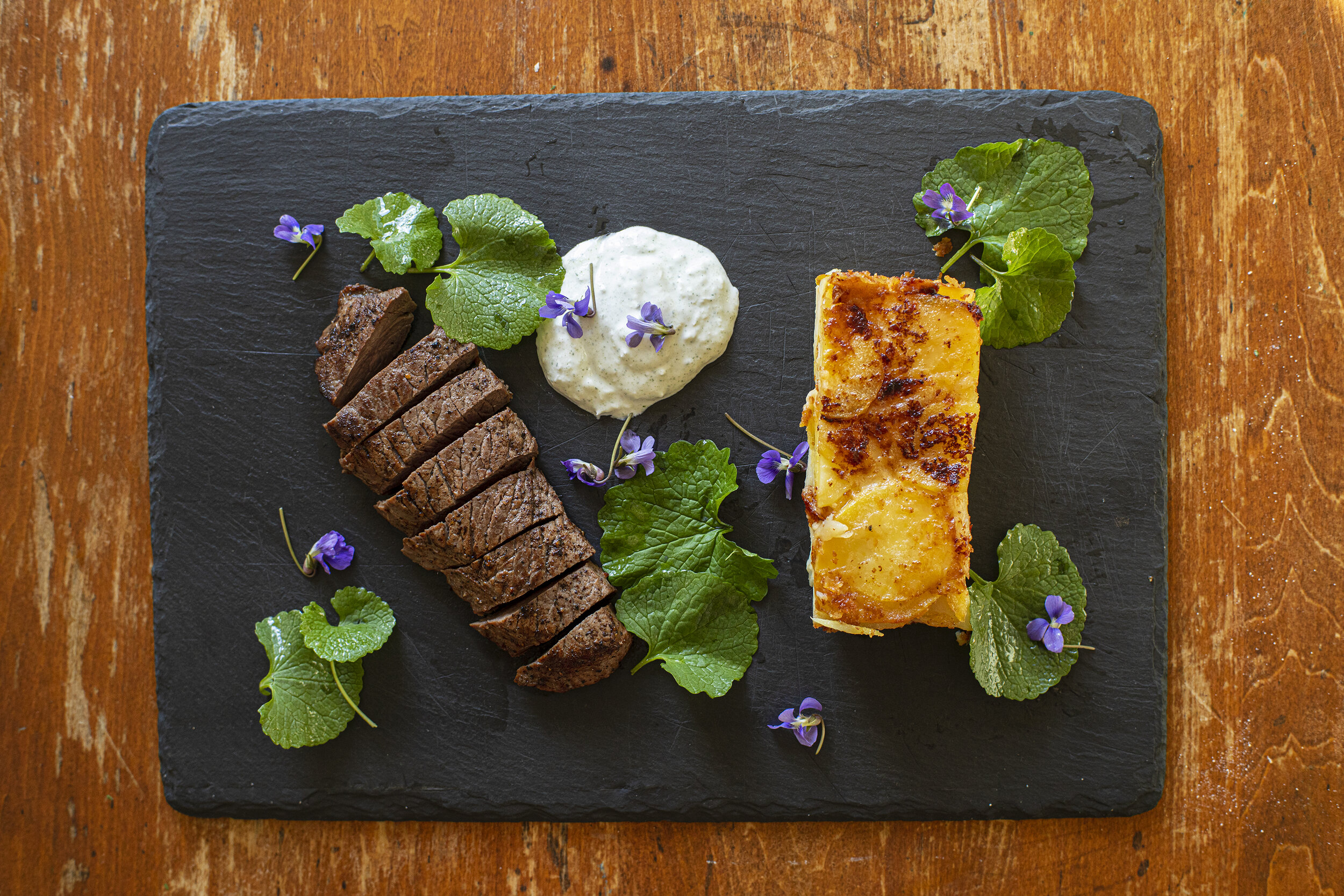Venison + Ramp Sausage with Creamy Polenta
We made it through another week. Tomorrow might be one of those days filled with dread and anxiety, but right now is filled with the simple comfort of a big plate of creamy polenta, venison + ramp sausage, and a fried farm egg. This dish transports me back to the table with my parents and grandparents and hits on all the nostalgic notes that you could ask for. Video of the process is below.
The Sausage
I use about 40% pork fat to mix with the ground venison in this recipe.
2.8 lbs freshly ground venison
1.1 lbs ground pork fat
10 grams dehydrated ramp powder (recipe can be found here)
Dried chili flakes to taste
15 grams salt
2 tsp fennel seeds
15 grams brown sugar
Natural hog casings
Instructions
Mix together, by hand, all of your filling ingredients in a large bowl.
Carefully slide the sausage casing up onto the stuffing tube. Insert whatever joke you want here. Leave the end untied to allow air to pass through. You’ll tie it off at the end.
On the slowest setting, carefully feed the sausage mixture down into the hopper. You’ll want to work slow and steady, and pause whenever you have any complications. The goal is to have a uniform filling all the way through the casing, without it being packed too tight where the casing will break apart or burst. If you’re attempting this recipe, you’ll likely have made your own sausages before.
When you’ve finished stuffing your sausage now it’s time to tie your links. I typically will make small batches, so I’ll tie each link individually, gently applying pressure with my fingers where I want there to be a break, and then twisting it around to create a nice clean break between links. There are much more elegant and efficient ways to do this and lots of great Youtube videos from professional butchers who can help visualize this process.
Heat up some olive oil in a skillet and brown the sausage on all sides. Transfer the sausage to a pot of simmering red sauce to continue cooking for another 20 minutes. My classic red sauce recipe can be found here.
Creamy Polenta
1 cup coarse cornmeal
1/2 stick Butter
1 cup cubed provolone cheese
1 cup whole milk
2 - 3 cups chicken stock
Salt
Instructions
Bring 1 cup of milk and 2 cups of stock to a simmer and add the cornmeal.
You’ll need to constantly stir the polenta to ensure it doesn’t stick to the bottom of the pan.
Add in the butter and cubed provolone and keep stirring until it melts. Add salt to taste.
If it starts to feel a little too thick, add some reserved stock to thin it out. Keep adding more stock to maintain the right creamy texture. In total it will take about 30 minutes start to finish.




























































